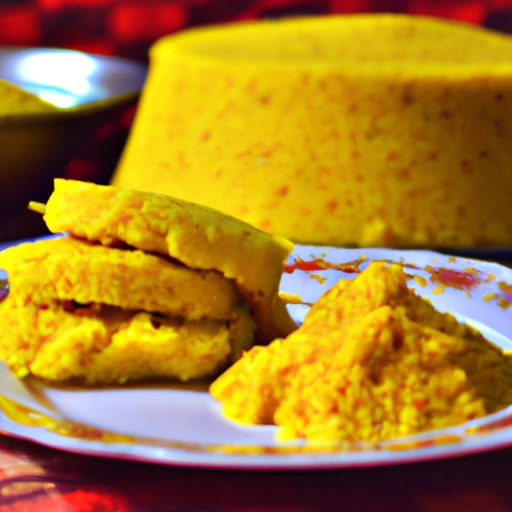Polenta
Description

Polenta is a dish made from ground yellow or white cornmeal boiled into a porridge or cooked to a dough-like consistency. Originating in Europe, it has become popular worldwide, with each region adding its unique twist. While traditionally made from coarser, stone-ground cornmeal, pre-cooked, ready-to-eat versions are also widely available. Polenta can be served creamy or allowed to set and then baked, fried, or grilled. Measurements in recipes for polenta can vary, with Europeans typically using grams and milliliters, while Americans might use cups and ounces. For example, a recipe might call for 250 grams (8.8 ounces or about 1 cup) of cornmeal and 1 liter (4.2 cups or about 34 ounces) of water.
Common uses
Polenta is commonly used as a side dish, taking the place of rice, pasta, or potatoes. It can also be used as a base for sauces, stews, and other toppings, or cooled and sliced for a variety of preparations including grilling and frying.
Nutritional value
Calories
A 100-gram serving of cooked polenta contains approximately 89 calories.
Protein
Polenta provides about 2 grams of protein per 100-gram serving.
Fat
There is roughly 1 gram of fat in a 100-gram serving of cooked polenta.
Carbohydrates
Polenta is rich in carbohydrates, with about 19 grams per 100-gram serving.
Vitamins
Polenta contains B-vitamins, particularly niacin (B3) and folate (B9).
Minerals
It also offers minerals such as iron, magnesium, and zinc.
Health benefits
Polenta is a good source of complex carbohydrates, providing energy and aiding in digestion due to its dietary fiber content. The B-vitamins present in polenta help with energy metabolism and maintaining healthy skin. Its gluten-free nature makes it suitable for those with celiac disease or gluten sensitivity.
Potential risks
While polenta is generally safe for consumption, overeating can lead to excessive carbohydrate and calorie intake. Pre-packaged polenta may also have added salt or preservatives, which should be considered by those monitoring their sodium intake.
Common recipes
Polenta is used in recipes ranging from creamy, cheesy polenta to crispy polenta fries. It can also be found in desserts and sweet cakes or used as a thickener in soups and casseroles.
Cooking methods
Traditional cooking methods involve simmering the cornmeal in water or broth until thickened. Modern techniques include baking and frying slices of polenta or using it in layered dishes similar to lasagna.
Pairing with other ingredients
Polenta pairs well with robust flavors such as tomato-based sauces, wild mushrooms, braised meats, and rich cheeses like gorgonzola or parmesan.
Summary
Polenta is a versatile, nutritious, and comforting food ingredient that has crossed cultural boundaries to become a beloved staple in many parts of the world. With its simple preparation and potential for varied and delicious culinary applications, polenta is a testament to the enduring legacy of rustic, peasant-style cooking influencing modern cuisine.